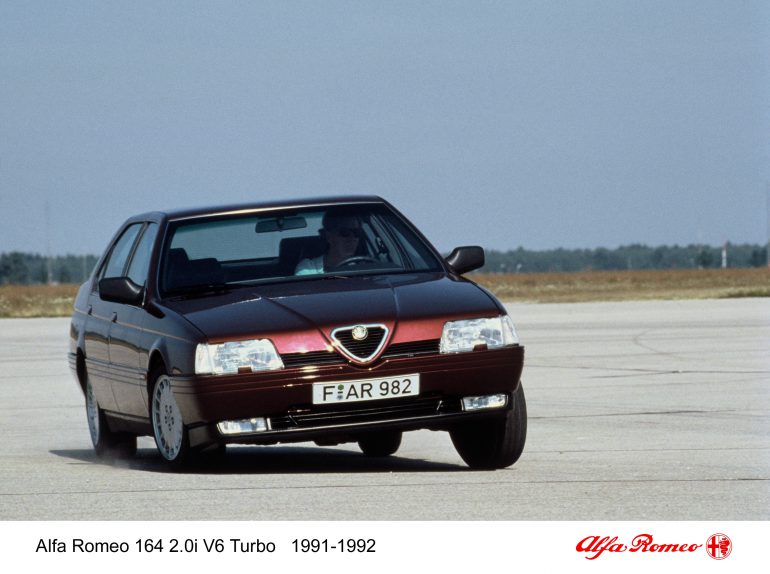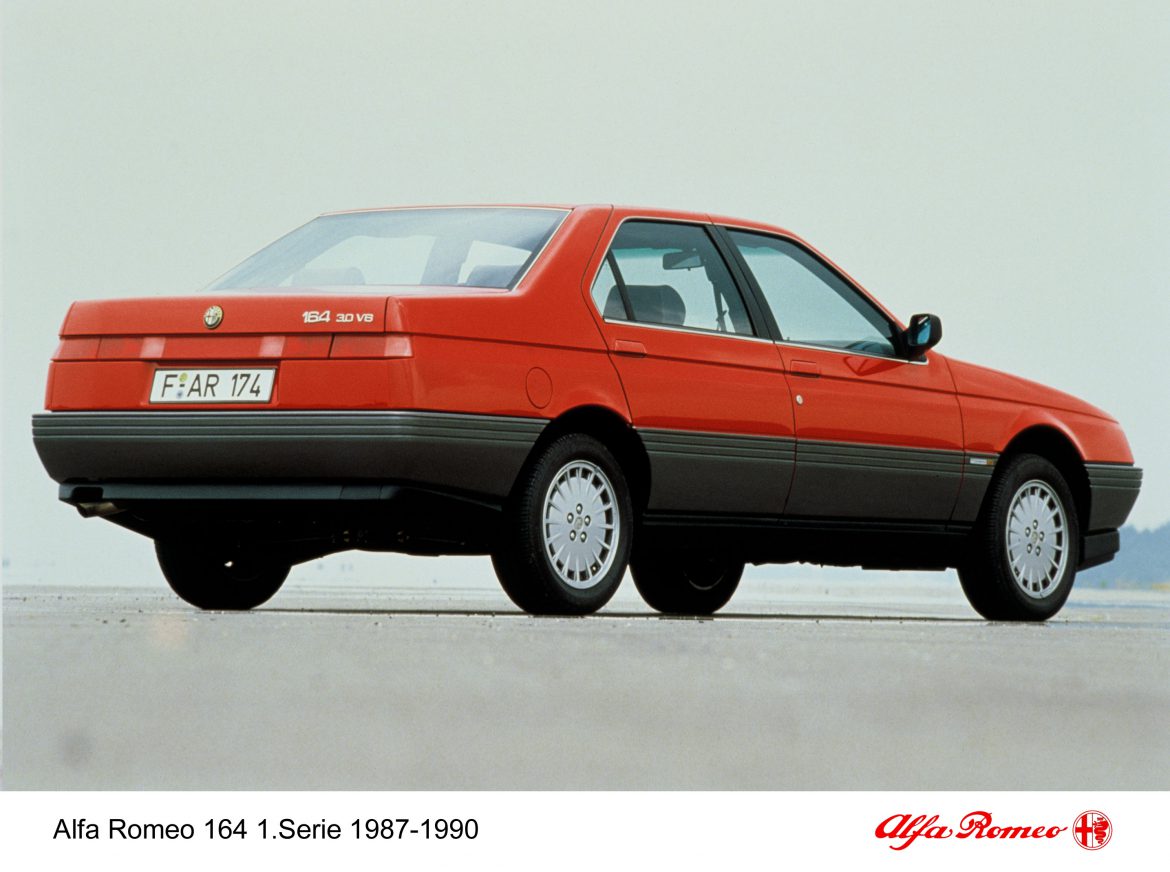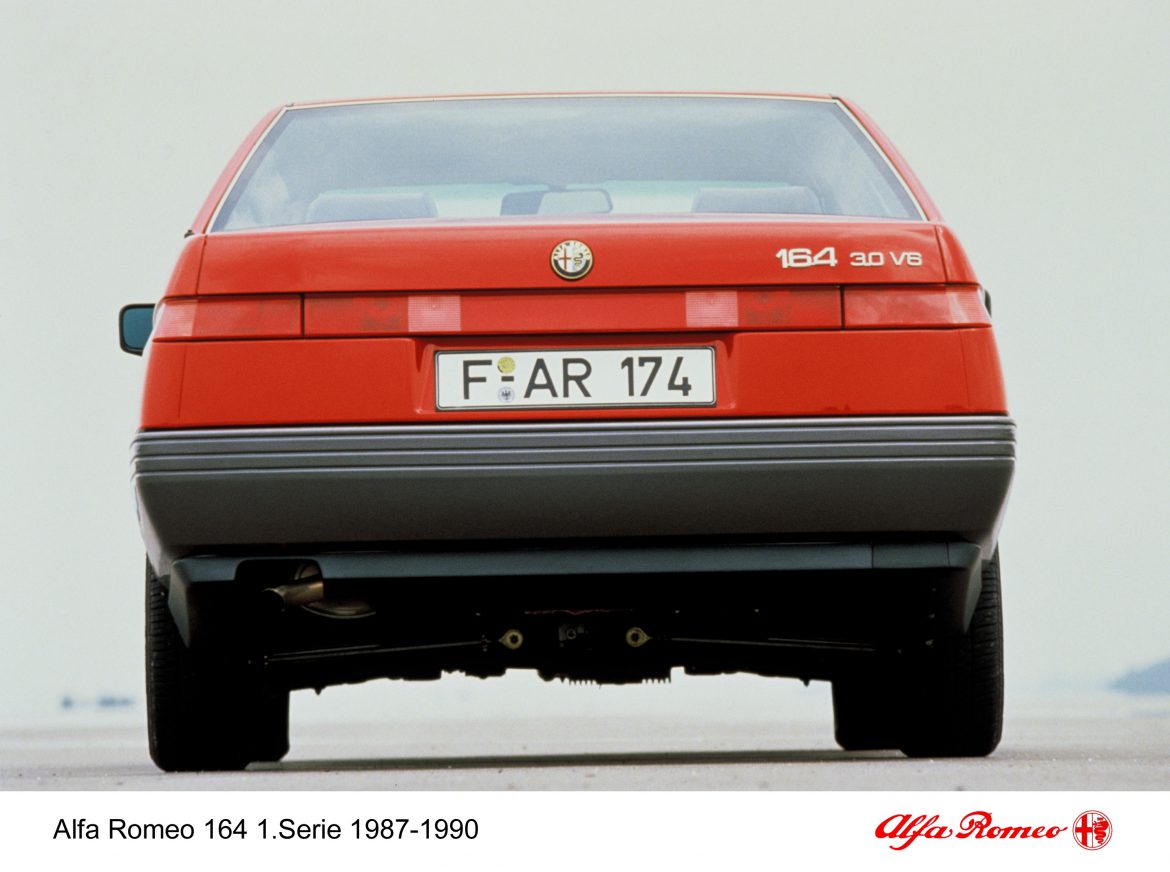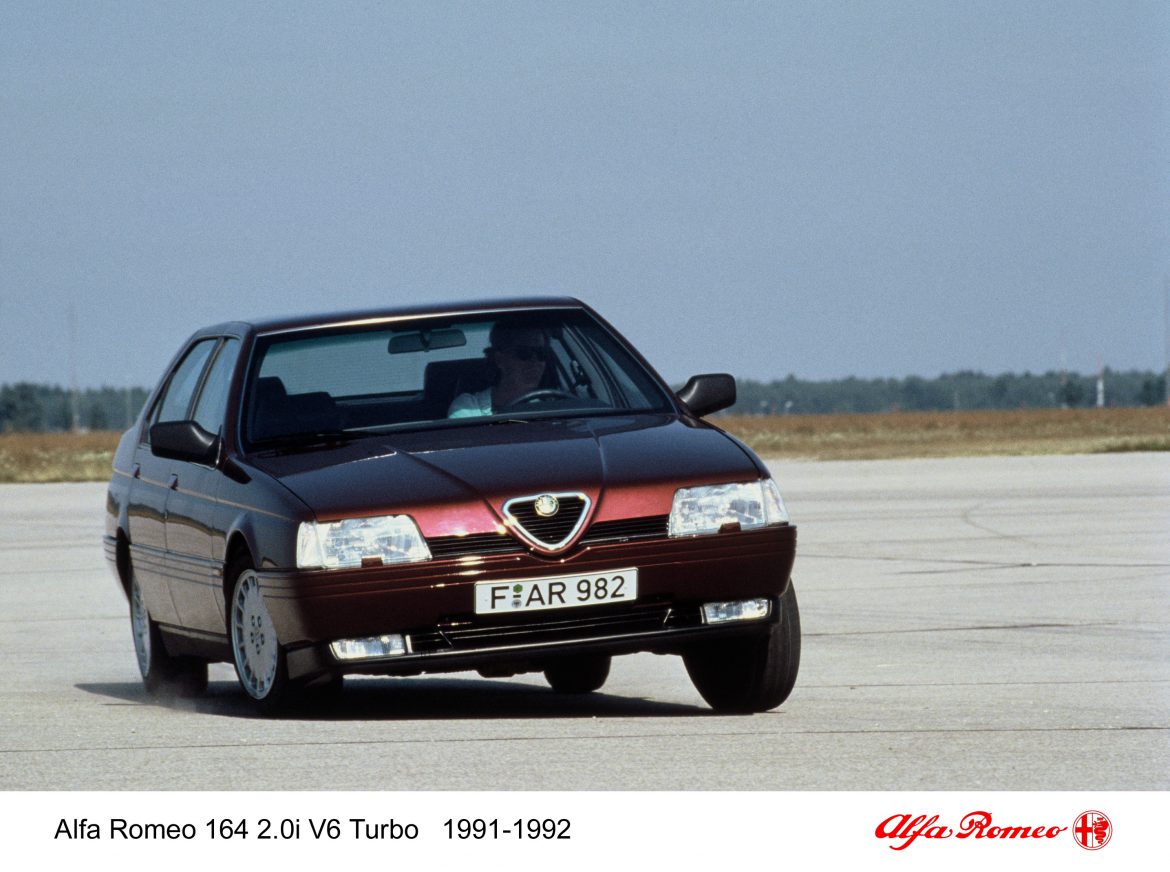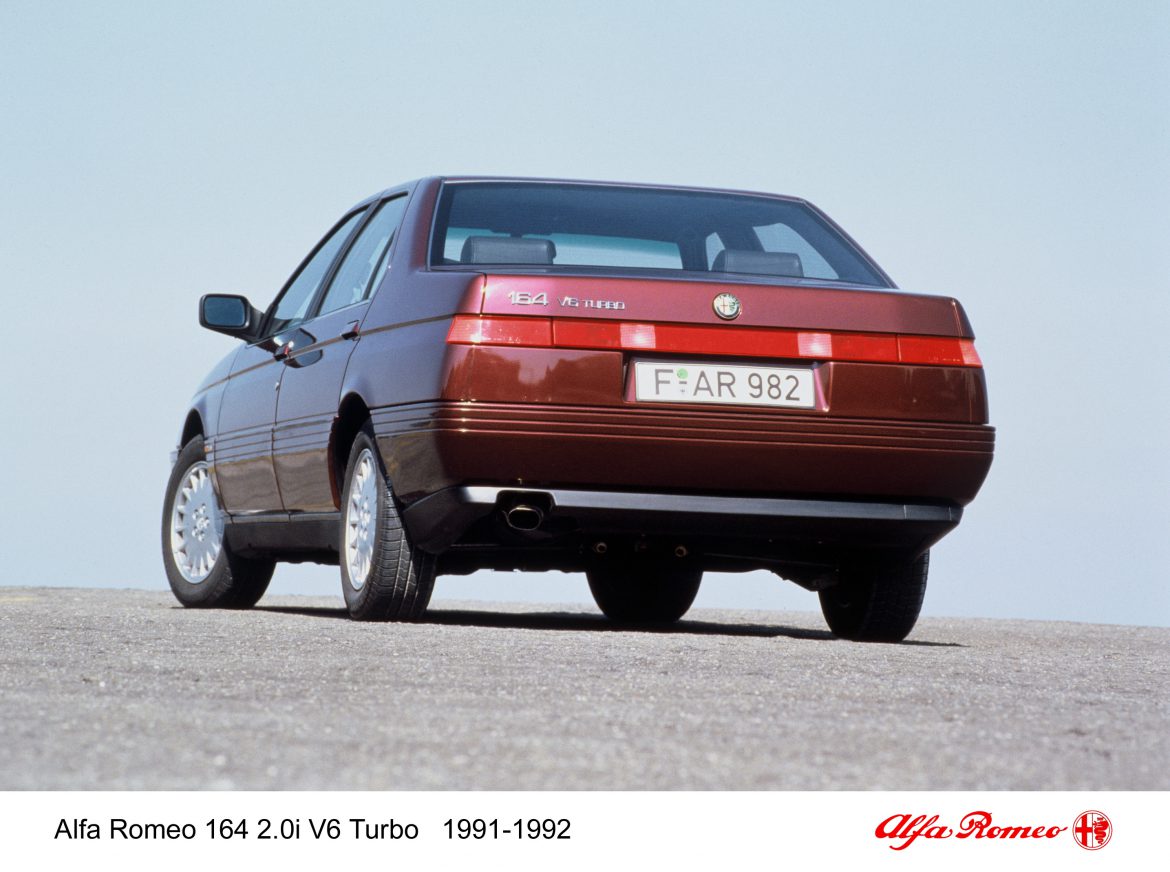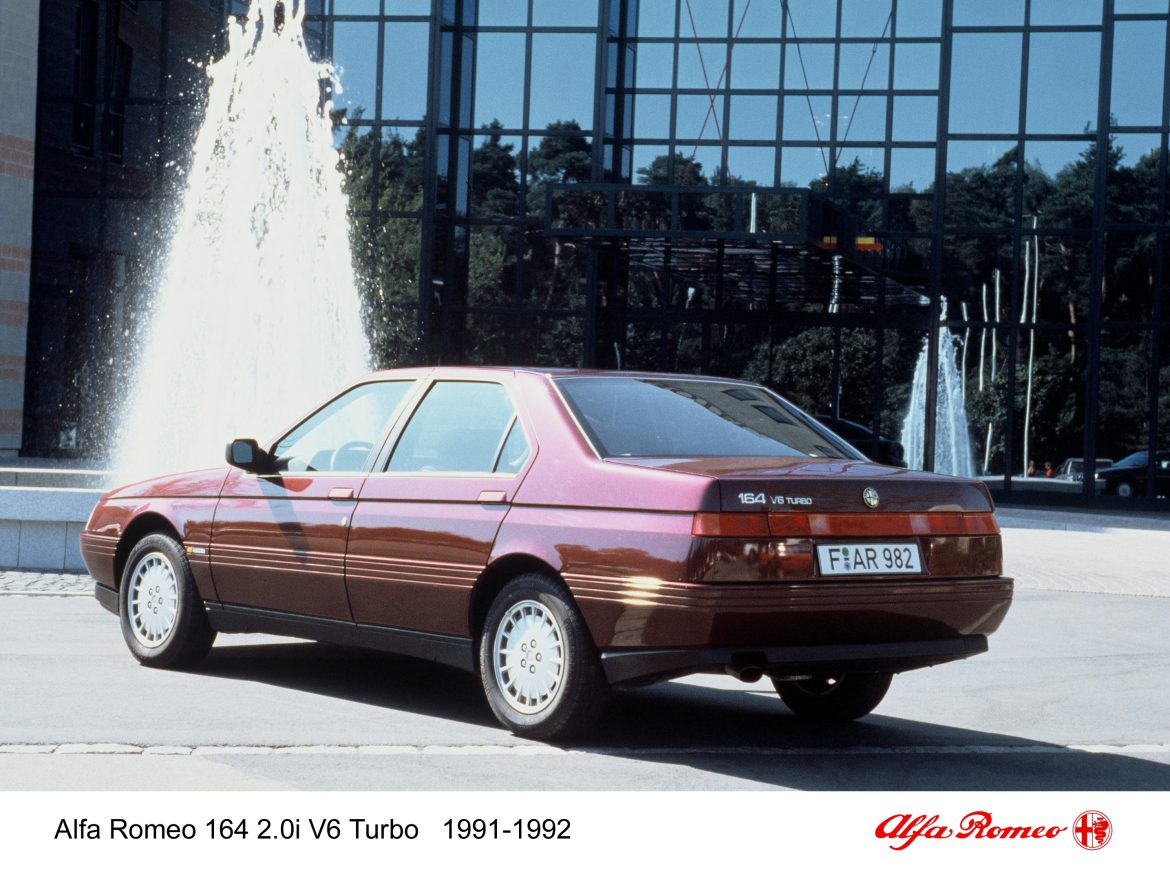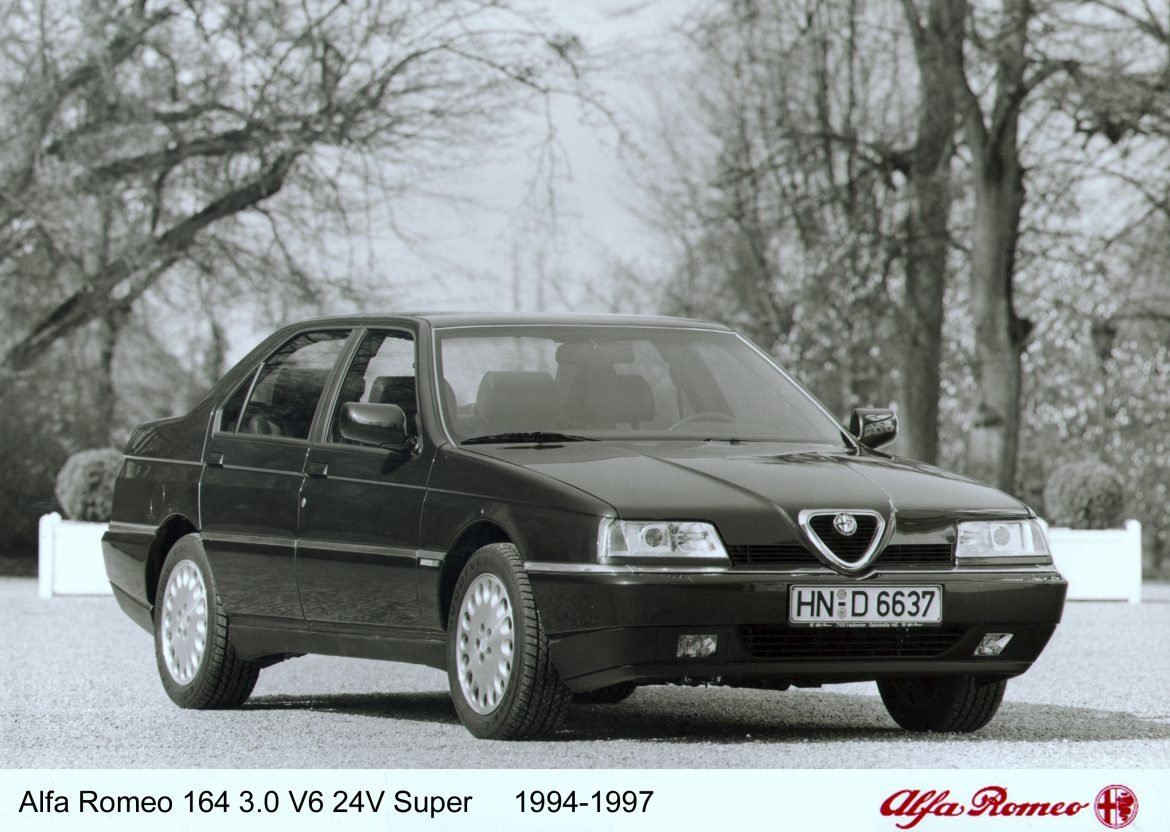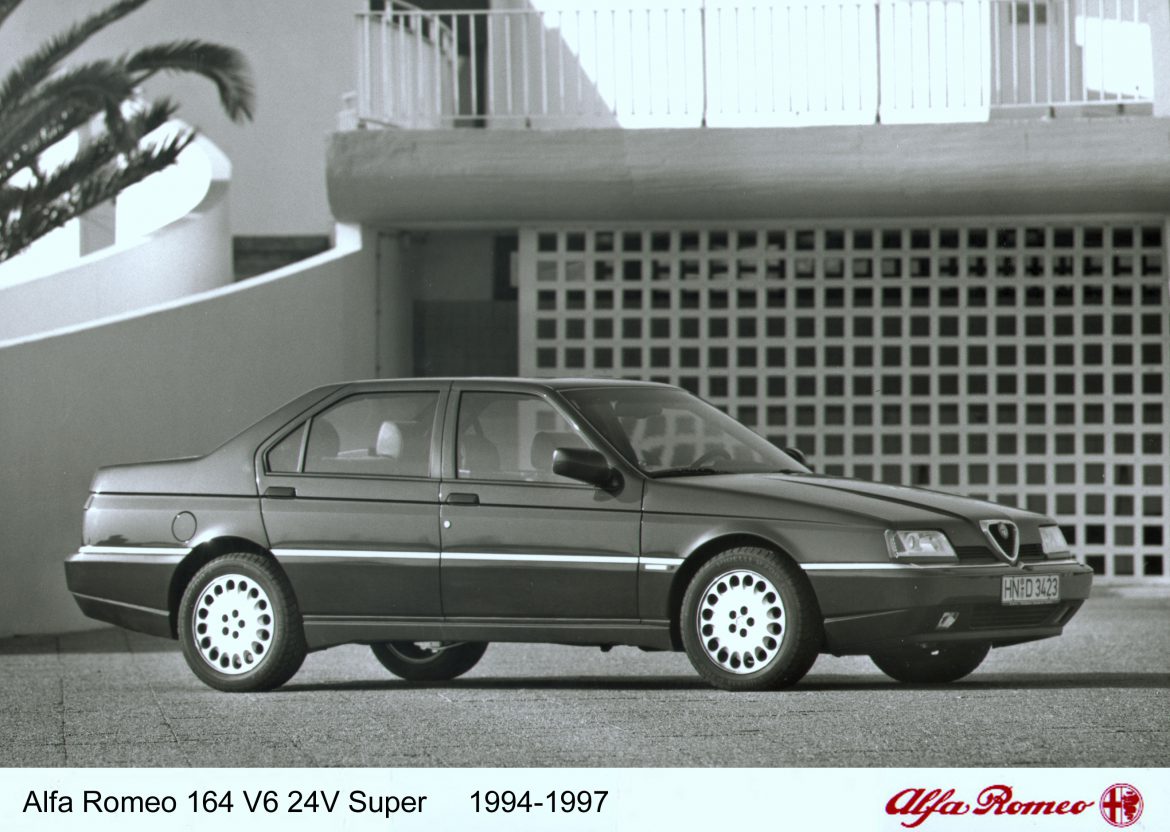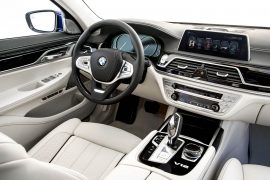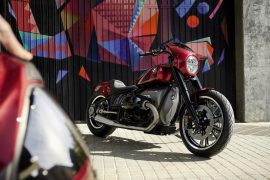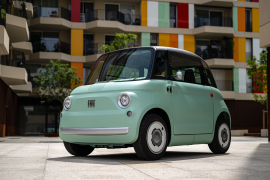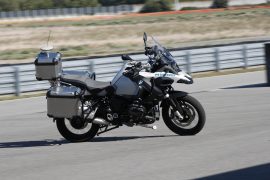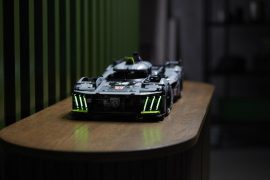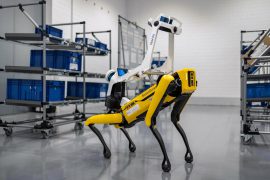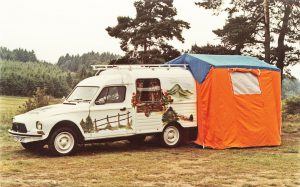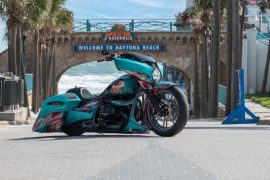CULT CARS: 35 years of Alfa Romeo 164 – revolutionary design and pioneering technology
The car presented by Alfa Romeo at the International Motor Show (IAA) in Frankfurt in autumn 1987 was a message to the world: the traditional Italian brand was stepping on the gas in the luxury class. And with a style all its own. The Alfa Romeo 164 is clearly different from its competitors. The design is unique, the sporty design is almost a revolution in the otherwise luxury and comfort-oriented vehicle category. The enthusiasm of the public and the commercial success of the Alfa Romeo 164, which was finally built for ten years, compensated engineers and designers for the not always easy path from the idea to the finished car.
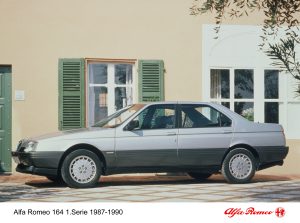
During the development phase, the project was codenamed Alberto. It is made up of the parts Alfa Romeo (Al), Berlina (Ber, Italian for limousine) and Torino (To, Italian name for Turin). Alberto carries high hopes. Basically, it is to replace two models, the Alfa Romeo 6, which has been built since 1979, and the Alfa Romeo 90, which has been in the range since 1984. Vittorio Ghidella, president of Alfa Romeo at the time, placed correspondingly high demands on the development team.
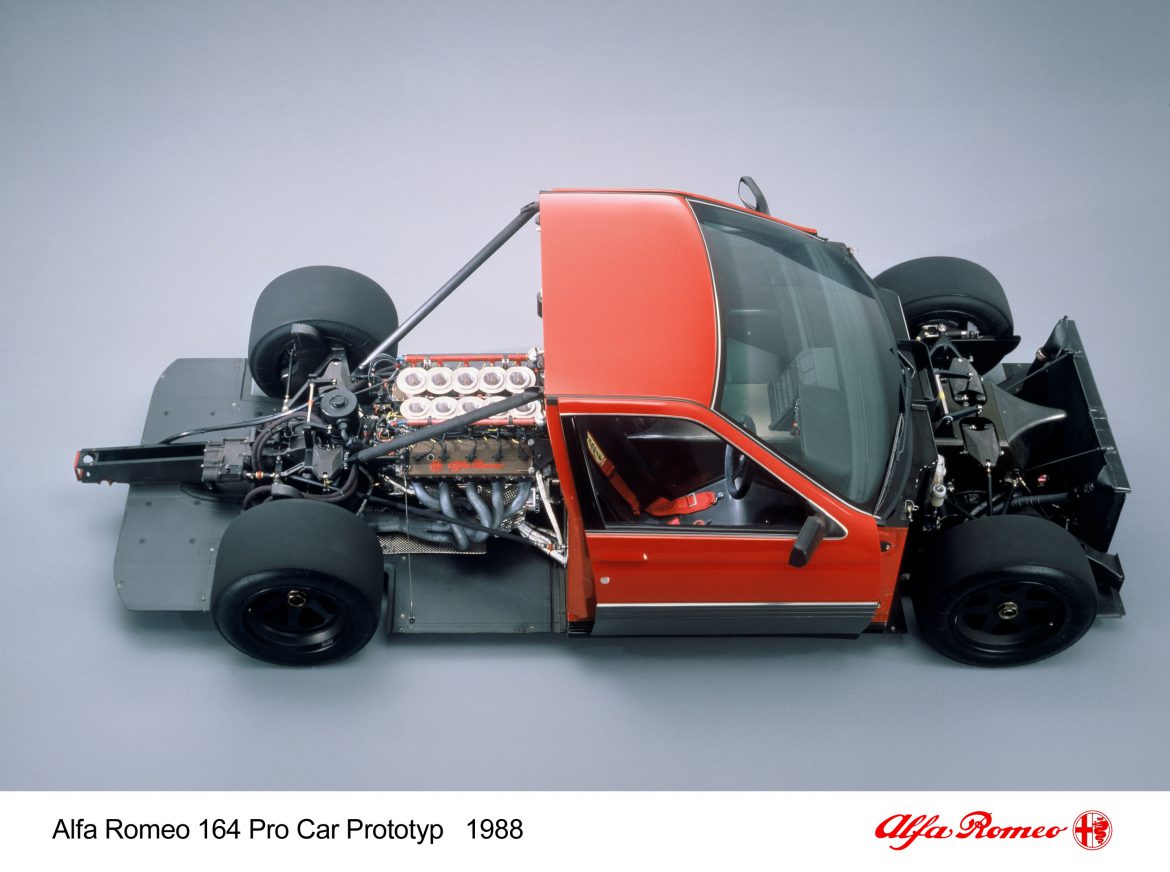
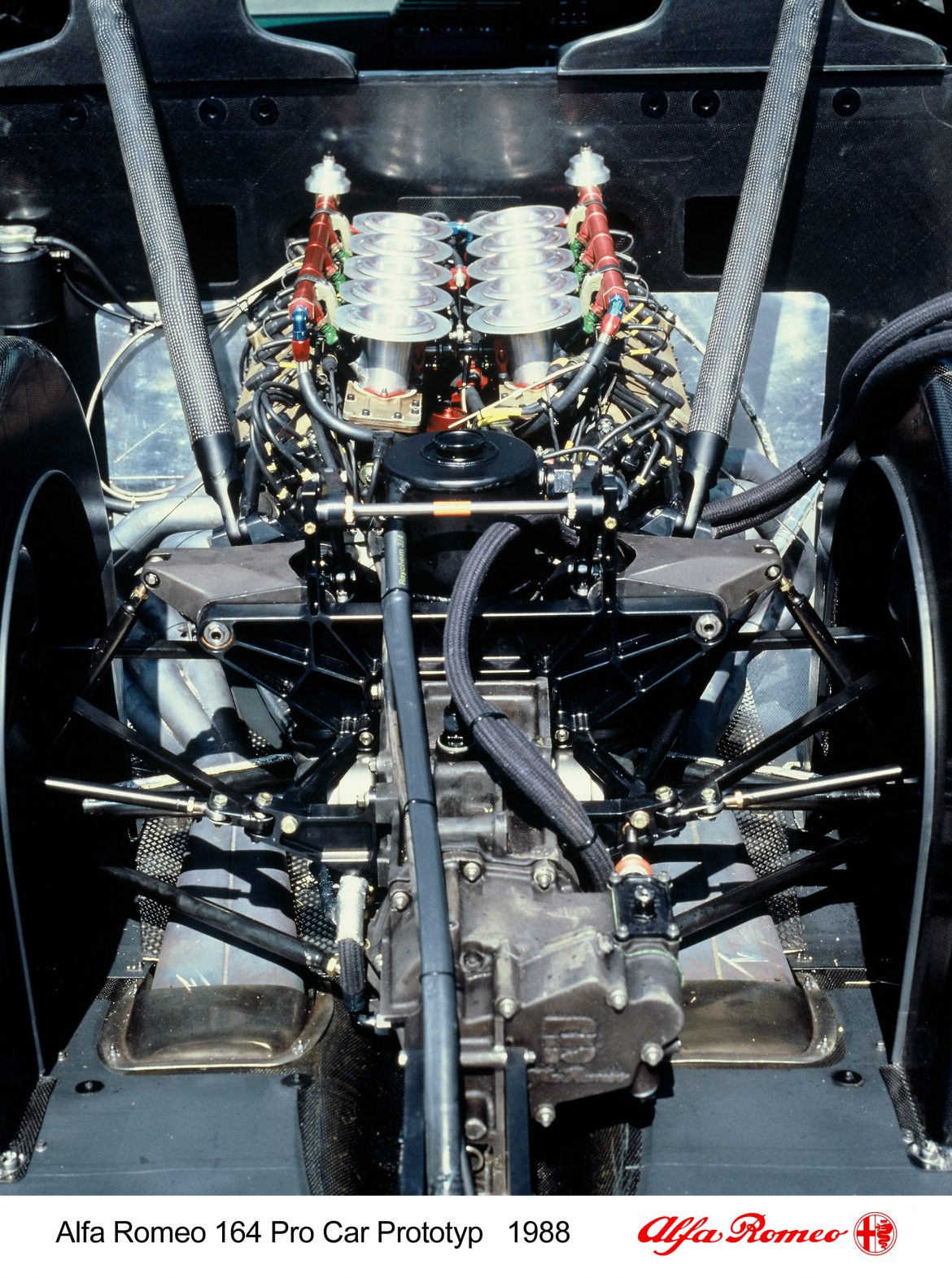
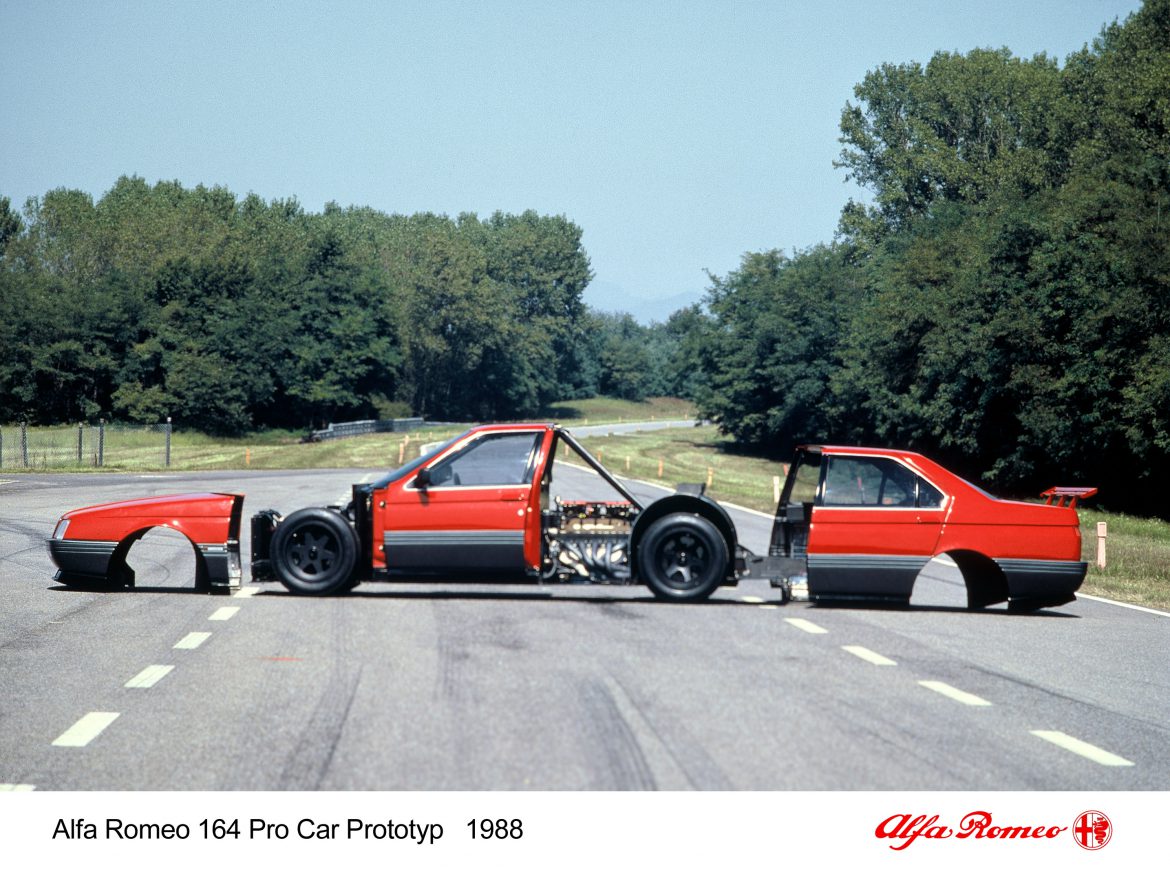
The fact that a new wind was blowing through the departments of the traditional brand is also shown by the reference to the city of Turin in the code name Alberto – since the end of 1986, Alfa Romeo, originally based in the Milan suburb of Arese, has belonged to the Fiat Group. Cost efficiency is right at the top of the specifications. When developing a car, a lot of money can be saved if the chassis is not only used for one model. This approach is called platform strategy. It is taken for granted today, but at least in cross-brand form it was still in its infancy in the early 1980s. And so it is quite remarkable when the Fiat Group and Saab join forces to develop a common platform. This project goes under the name „Tipo 4“ and eventually forms the technical basis for Fiat Croma, Lancia Thema, Saab 9000 and Alfa Romeo 164.
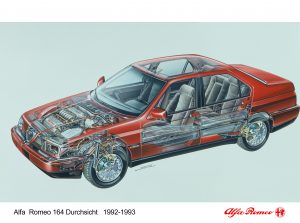
Despite all the commonalities in the background, the four brands go their own ways when it comes to design. While the creative minds of Giugiaro’s company Italdesign are responsible for Fiat, Lancia and Saab, the design studio Pininfarina is responsible for the shape of the Alfa Romeo 164. The result is much more matter-of-fact than what Alfa Romeo is used to. Instead of emotional curves, the body shows strict straight lines, smooth surfaces and horizontal lines. A distinctive bead running along the entire flank merges with the wide light strip at the rear. The all-round protective plastic cladding was a very popular style element at the time. The elegant yet sporty body also boasts a drag coefficient of 0.305, which is excellent for a luxury-class saloon.
The interior is equally geometric. Here, too, straight lines and smooth surfaces determine the look. The driver’s and front passenger’s seats offer good lateral support, are electrically adjustable and, in some model versions, are upholstered in leather. The dashboard is clearly structured, with classic round instruments providing information on speed, engine revs and other vehicle data.
For the engines, Alfa Romeo relies largely on its own developments. A four-cylinder petrol engine with a capacity of two litres is based on the legendary twin-camshaft power unit. A novelty, however, is the cylinder head. As in the famous Giulia Sprint GTA racing cars of the 1960s, two spark plugs per cylinder (Twin Spark) ensure optimum combustion. The all-aluminium engine produces 109 kW (148 hp) or 105 kW (143 hp) with catalytic converter. The Alfa Romeo 164 with four-cylinder engine can be recognised by the wheels fastened with four bolts; the six-cylinder models use five.
A second four-cylinder petrol engine is an almost exclusively Italian affair. With a displacement of two litres as well, the engine taken over from Lancia remains below the luxury tax threshold, but thanks to a turbocharger it produces around 30 hp more than the naturally aspirated model. A four-cylinder turbocharged diesel engine, which initially delivers 84 kW (114 hp), will only be available in Germany in a later version.
The highlight of the engine range, however, is a V6 cylinder. The aluminium power unit with a 60 degree bank angle is the latest development stage of an engine already used in several Alfa Romeo models, which is called the Arese V6 by fans because of its origin. The six chromed intake pipes of the transversely mounted V6 are a visual masterpiece. The engine, which is also considered an acoustic treat, initially produces 143 kW (192 hp) or, with a catalytic converter, 135 kW (184 hp). With a top speed of 230 km/h, the Alfa Romeo 164 3.0 V6 is one of the fastest on the motorway.
All engines are combined with a crisply shifting five-speed gearbox, some model versions are additionally available with a four-speed automatic. Both do not transfer the engine power to the rear wheels like their predecessors – the 164 model marks the switch to front-wheel drive even in Alfa Romeo’s luxury class. The elaborate chassis with McPherson struts on the front axle and multi-link rear axle nevertheless ensures sporty handling.
The takeover by the Fiat Group is also noticeable in production, the quality of workmanship increases. For the first time, robots are used for production at the traditional Alfa Romeo plant in Arese. The body of the Alfa Romeo 164 is better protected against rust by galvanisation and cavity sealing.
First facelift – improved steering and more powerful V6
For the model year 1991 the Alfa Romeo 164 is technically revised, internally this step is called „Maquilage 90“. One or two points of criticism that fans and the trade press had levelled at the first generation of the model were eliminated. For example, the installation position of the engine is somewhat lower in the front frame in order to achieve a more kinetically favourable angle for the drive shafts. In addition, the steering has been revised and tuned more directly. Together, these measures mean that less drive force is now felt in the steering wheel. The body, on the other hand, remains unchanged.
The 2.0 Twin Spark and the 2.5 turbo diesel are unchanged. The three-litre V6 is now also available in a more powerful version (achieved, among other things, by sharper camshafts and higher compression). The new top model Alfa Romeo 164 3.0 V6 Quadrifoglio reaches a top speed of 237 km/h with 147 kW (200 hp) and accelerates from standstill to 100 km/h in 7.7 seconds.
From spring 1991, a new turbo petrol engine claimed the title of top engine. Out of respect for Italian road tax, the engine capacity remained at two litres. But the small power plant is now a high-revving V6 cylinder. Thanks to intercooling, it produces 150 kW (204 hp) or, from autumn 1992, 148 kW (201 hp) with a catalytic converter.
Second facelift – six-cylinder now also with 24 valves
From model year 1993 onwards, the Alfa Romeo 164 had two body styles. The previous shape is still built, but at the same time a revised design is introduced with the equipment line Super. The front spoiler, rear apron, side skirts and the side protection strips, which now have a smooth surface, are now painted in body colour. In addition, the complete on-board electronics are modernised.
The Alfa Romeo 164 Super is offered with thoroughly revised engines. The 2.0 Twin Spark is now based on a four-cylinder engine developed by Fiat with a slightly higher displacement. The power output remains the same at 106 kW (144 hp). The output of the 2.5-litre turbo diesel, on the other hand, increases to 92 kW (125 hp). The biggest change concerns the three-litre V6 – it gets a four-valve cylinder head. With 155 kW (211 hp), 240 km/h are now possible.
The new top version of the original body variant, which is still in production, is even more powerful. Also with a four-valve cylinder head, the Alfa Romeo 164 3.0 V6 24V Quadrifoglio now offers 171 kW (232 hp) – with a top speed of 245 km/h the fastest production car from Alfa Romeo to date. Exterior features include lowered front spoiler, side skirts and rear apron. The tax-saving two-litre turbo remains in the range, as does the three-litre V6 with two-valve technology. Its response is improved by new engine electronics, although the power output is slightly reduced to 180 hp (132 kW). The ellipsoid headlamps are a visual distinctive feature of the models from the first years of construction.
At the end of 1993, the range of the original model, the Alfa Romeo 164 3.0 V6 24V Quadrifoglio, is replaced by a new variant with four-wheel drive. The system, called Q4, is based on an electronically controlled viscous clutch that provides variable power distribution between the front and rear axles. At the rear axle, a torsional differential ensures optimum traction. The Alfa Romeo 164 3.0 V6 24V Q4 is also built exclusively with the most powerful engine variant with 171 kW (232 hp), which is exclusively combined with a six-speed transmission. Like the Quadrifoglio model variant, the Q4 is also equipped with an electronically adjustable chassis.
Third facelift – from now on only Super
In 1994, the Alfa Romeo 164 is revised again. From this point on, all model variants show the design of the equipment line that had been called Super until then. Among other things, the driver’s airbag is now standard on all versions. The engine range remains unchanged, but all powerplants are adapted to the new Euro 2 directive, among other things by means of differently graded gearboxes and modified engine electronics. As a result, the output of the most powerful three-litre V6 drops slightly to 168 kW (228 hp).
The last Alfa Romeo 164 rolled off the production line at the Arese plant at the end of June 1997. Total production reaches almost 270,000 units within a decade. The successor model is the Alfa Romeo 166.
The Alfa Romeo 164 in motor racing
Even though Alfa Romeo was no longer represented in Formula 1 at the end of the 1980s, the brand continued to maintain excellent contacts in the top class of motor sport. Bernie Ecclestone, who was increasingly dominating Formula 1 at the time, approached Alfa Romeo with two ideas. The first was to bring more spectators to the Grand Prix circuit: Races for prominent amateur drivers who compete against each other in technically identical cars. And so ten red and ten white Alfa Romeo 164s each are built in near-series racing versions. The so-called „Celebrity Races“ take place during the 1988 season as part of European Grand Prix events. The prize money is donated to charity.
Ecclestone’s second idea is much more spectacular and aims to attract additional engine manufacturers to Formula 1. The Briton’s plan for the future of touring car racing: the ProCar series with racers that look like production cars on the outside but have pure Formula 1 technology under their skin.
To lure potential customers, Ecclestone gets permission from Alfa Romeo to build a showpiece specimen with the silhouette of the Alfa Romeo 164. He even manages to get rid of the 3.5-litre V10 originally designed by Alfa Romeo for Formula 1. The Alfa Corse factory racing department also created a body that largely corresponded to the new Alfa Romeo 164 production model. However, it consists of a monocoque structure made of aluminium in the middle and removable bonnets made of carbon fibre at the front and rear. The only visible difference is a comparatively small rear spoiler. The chassis is provided by the Formula 1 racing team Brabham.
With around 456 kW (620 hp), the Alfa Romeo ProCar accelerates from a standstill to 100 km/h in around two seconds. Before the 1988 Italian Grand Prix in Monza, Formula 1 driver Riccardo Patrese drives a few laps. On the straight he is measured at 329 km/h – faster than his colleagues in their Grand Prix cars who are watching with interest.
Ecclestone’s plan with the ProCar series, however, does not work out. No other manufacturer is interested in this concept – the Alfa Romeo 164 with V-ten cylinder is never used in races.
The technology of the Alfa Romeo 164
Petrol engines:
2.0i Twin Spark
four cylinders, water cooled, transverse mounted, aluminium engine block and cylinder head, two overhead camshafts driven by a chain, two valves and two spark plugs per cylinder, electro-hydraulic phaser bore x stroke 84.0 x 88.5 mm, capacity 1,962 cm3 (except engine AR64103)
2.0 TS, engine AR06420, without catalytic converter (built 9/1987 to 9/1992):
109 kW (148 hp) at 5,800 rpm, 188 Nm at 4,700 rpm
Top speed 210 km/h, acceleration 0 – 100 km/h in 9.2 seconds
2.0 TS catalytic converter, engine AR06416 (built 12/1987 to 9/1992):
105 kW (143 hp) at 5,800 rpm, 188 Nm at 4,700 rpm
from 9/1991 with 106 kW (144 hp) at 5,800 rpm, 187 Nm at 4,700 rpm.
Top speed 210 km/h, acceleration 0 – 100 km/h in 9.2 seconds
2.0 Super TS, engine AR64103 (built from 9/1992 to 9/1998):
Bore x stroke 84.0 x 90.0 mm, capacity 1,995 cm3
106 kW (144 hp) at 5,800 rpm, 193 Nm at 4,700 rpm
Top speed 210 km/h, acceleration 0 – 100 km/h in 9.2 seconds
2.0 turbo
four cylinders, water-cooled, transversely mounted, cast iron engine block, aluminium cylinder head, two overhead camshafts driven by a toothed belt, two valves per cylinder,
bore x stroke 84.0 x 90.0 mm, capacity 1,995 cm3
2.0 Turbo, engine AR06476 (built 10/1987 to 2/1991):
129 kW (175 hp) at 5,250 rpm, 265 Nm at 2,500 rpm (284 Nm with overboost for a short time).
Top speed 223 km/h, acceleration 0 – 100 km/h in 7.2 seconds
2.0i V6 Turbo
six cylinders, water-cooled, transversely mounted, engine block and cylinder heads made of aluminium,
one camshaft per cylinder bank, driven by a timing belt, two valves per cylinder,
bore x stroke 80.0 x 66.2 mm, capacity 1,995 cm3
2.0i V6 Turbo, engine AR64101, without catalytic converter (built 3/1991 to 9/1992):
150 kW (204 hp) at 6,000 rpm, 280 Nm at 2,800 – 3,000 rpm (briefly 300 Nm with overboost).
Top speed 240 km/h, acceleration 0 – 100 km/h in 7.7 seconds
2.0 Super V6 TB, engine AR64102 (built 9/1992 to 6/1997):
148 kW (201 PS) at 6,000 rpm, 280 Nm at 2,800 – 3,000 rpm (briefly 300 Nm with overboost)
Top speed 237 km/h, acceleration 0 – 100 km/h in 8.1 seconds
3.0i V6
six cylinders, water-cooled, transversely mounted, engine block and cylinder heads made of aluminium,
one camshaft per cylinder bank, driven by a timing belt, two valves per cylinder,
bore x stroke 93.0 x 72.6 mm, capacity 2,959 cm3
3.0 V6, engine AR06410 (built from 6/1987 to 9/1992):
141 kW (192 PS) at 5,600 1/min, 245 Nm at 4,400 1/min
Top speed 230 km/h, acceleration 0 – 100 km/h in 8.1 seconds
3.0 V6 catalytic converter, engine AR06412 (built 6/1987 to 6/1994):
135 kW (184 hp) at 5,800 rpm, 261 Nm at 4,400 rpm
Top speed 230 km/h, acceleration 0 – 100 km/h in 8.1 seconds
3.0 V6 Quadrifoglio, engine AR064030 (built 9/1990 to 9/1992):
147 kW (200 hp) at 5,800 rpm, 269 Nm at 4,400 rpm
Top speed 237 km/h, acceleration 0 – 100 km/h in 7.7 seconds
3.0 V6 Super, engine AR64305, from 1993 Super (built 6/1994 to 6/1997):
132 kW (180 hp) at 5,600 rpm, 252 Nm at 4,400 rpm
top speed 230 km/h, acceleration 0 – 100 km/h in 8.1 seconds
3.0i V6 24V
six cylinders, water-cooled, transversely mounted, engine block and cylinder heads made of aluminium,
two camshafts per cylinder bank, driven by a toothed belt, four valves per cylinder
Bore x stroke 93.0 x 72.6 mm, capacity 2,959 cm3
3.0 V6 24V Super, engine AR66302, Super (built 9/1992 to 6/1997):
155 kW (211 hp) at 6,300 rpm, 266 Nm at 5,000 rpm
Top speed 240 km/h, acceleration 0 – 100 km/h in 8.0 seconds
3.0 V6 24V Quadrifoglio, engine AR64304, (built 9/1992 to 11/1993):
171 kW (232 hp) at 6,300 rpm, 284 Nm at 5,000 rpm
Top speed 245 km/h, acceleration 0 – 100 km/h in 7.7 seconds
3.0 V6 24V Q4, engine AR64307 (built 11/1993 to 6/1997):
171 kW (232 hp), from 10/1995 228 hp (168 kW) at 6,300 rpm, 284 Nm at 5,000 rpm
Top speed 237 km/h, acceleration 0 – 100 km/h in 7.9 seconds.
Diesel engines:
2.5 turbo diesel
four cylinders, water-cooled, transversely mounted, cast iron engine block, aluminium cylinder head,
one lateral camshaft driven by gears, two valves per cylinder,
bore x stroke 92.0 x 94.0 mm, capacity 2,499 cm3
2.5 turbo diesel, engine VM84A (built from 9/1987 to 9/1992):
84 kW (114 hp) at 4,200 rpm, 260 Nm at 2,200 rpm
Top speed 200 km/h, acceleration 0 – 100 km/h in 11.1 seconds
2.5 TD, from 2/1994 TD Super, engine VM84B (built 9/1992 to 6/1997):
92 kW (125 hp) at 4,200 rpm, 294 Nm at 2,200 rpm
from 2/1994 also with catalytic converter: 125 hp (92 kW) at 4,200 rpm, 288 Nm at 2,000 rpm
Top speed 202 km/h, acceleration 0 – 100 km/h in 10.8 second
Power transmission
Front wheel drive, five-speed gearbox,
Model 164 Q4 with four-wheel drive and six-speed transmission (Getrag),
models 3.0 V6 (except Quadrifoglio and Q4) on request also with four-speed automatic (ZF)
Chassis
front: independent suspension with struts and wishbones (McPherson system),
coil springs, telescopic shock absorbers, stabiliser,
servo-assisted rack-and-pinion steering
rear: Multi-link axle with independent suspension, coil springs,
telescopic shock absorber, anti-roll bar
3.0 6 24V Quadrifoglio and 3.0 6 24V Q4 models with electronically adjustable suspension as standard.
Tyres
depending on model 185/70×14 (2.0 TS) to 205/55×16
Brakes
Discs all round, internally ventilated at front (model 3.0 V6 24V Q4 also internally ventilated at rear),
ABS anti-lock brakes as standard
Dimensions
Length / width / height: depending on model 4,550 – 4,665 mm / 1,760 mm / 1,390 – 1,400 mm
Wheelbase: 2,660 mm
Track width front / rear: depending on model 1,515 – 1,538 mm / 1,488 – 1,519 mm
Unladen weight: depending on model 1,200 – 1,700 kg
Number of units: 2.0 TS and 2.0 Turbo (1987 – 1990): 88,757
2.5 turbo diesel (1987 – 1990): 26,604
3.0 V6 all versions (1987 – 1990): 33,112
2.0 TS and 2.0i V6 Turbo (1991 – 1992): 37.118
3.0 V6 all versions (1991 – 1992): 9.301
2.5 Turbodiesel (1991 – 1992): 8.911
2.0 TS and 2.0 Super (1992 – 1993): 15.532
2.5 TD and TD Super (1992 – 1993): 5.181
3.0 V6 all versions (1992 – 1993): 7,166
Production with four-wheel drive Q4: 1,406
all versions (1994 – 1997): 37,075
total production (1987 – 1997):
BRAND: Stellantis
virtualdesignmagazine Michael Hiller

